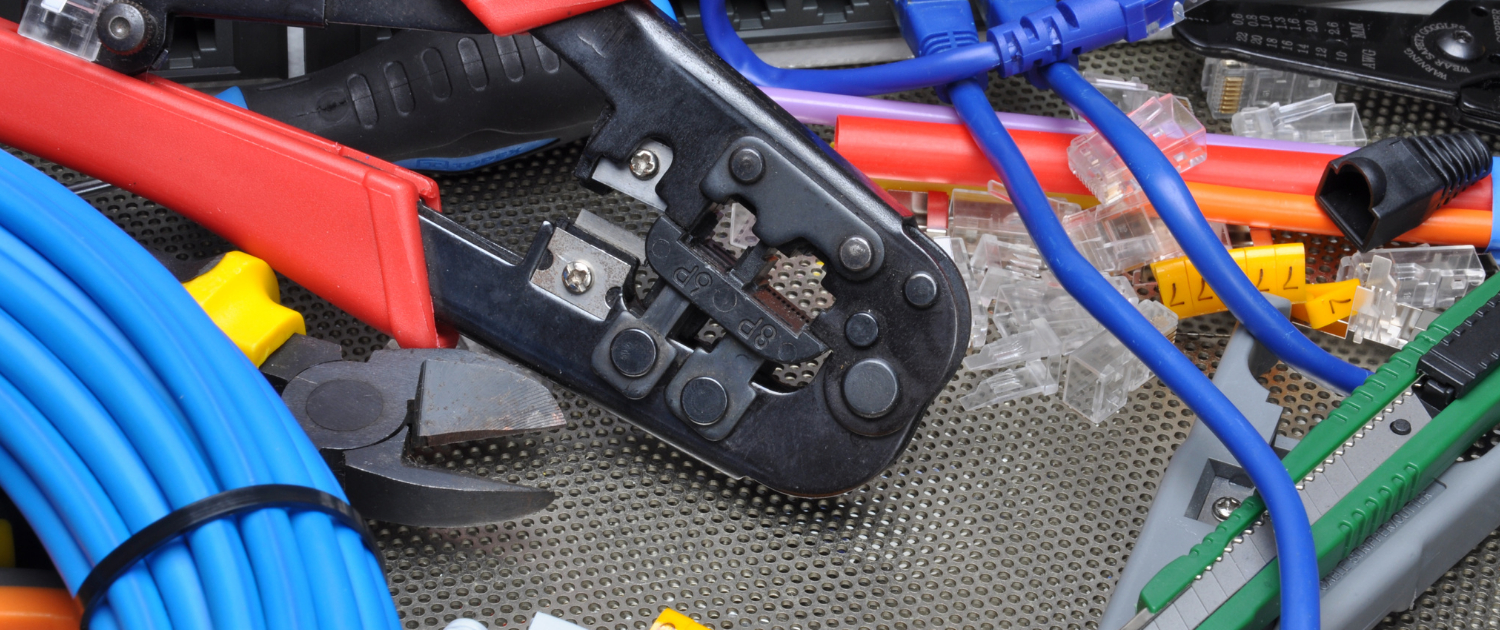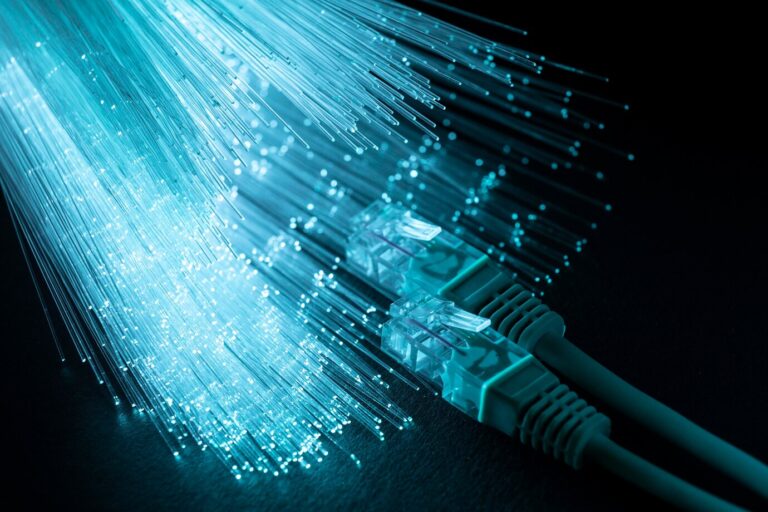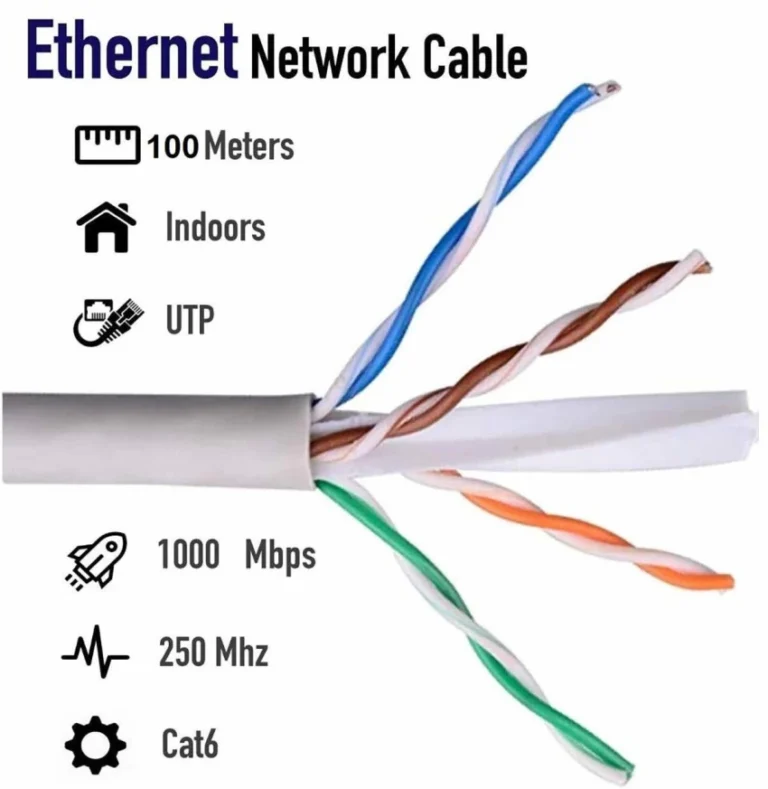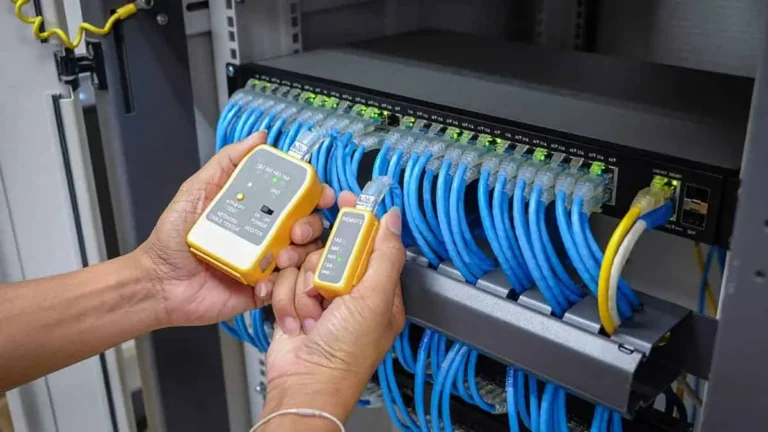In our interconnected world, where data flows like a digital lifeblood, ensuring the health of your network infrastructure is paramount.
Enter Cat6 cables – the unsung heroes that keep our information superhighways humming with efficiency.
However, like any investment, these cables require proper care and attention to deliver optimal performance over the long haul.
As the Kingdom of Saudi Arabia is progressively moving towards implementing advanced ideas and technologies into its future projects and cities, Microlink is working non-stop towards Cat6 Cable KSA implementation towards future-proof cabling.
Importance of Cat6 Cable Maintenance
Picture this – your network is the beating heart of your operation, and Cat6 cables are the veins carrying the lifeblood of data.
Just as regular check-ups are crucial for a healthy heart, so too is maintenance for your Cat6 cables.
Neglecting their well-being can lead to a myriad of issues, from sluggish data transfer to outright connectivity failures.
Cat6 cables are designed to handle high-speed data transmission, making them indispensable in today’s bandwidth-hungry environment.
Regular maintenance not only preserves their efficiency but also extends their lifespan, ensuring that your network remains a well-oiled machine.
Microlink also considers Cat6 Cable KSA as wise technology choices in implementing the network to sustain the future.
Significance of Caring for Your Investment
Consider your Cat6 cables as a valuable asset in your technological portfolio.
Just as you wouldn’t ignore the maintenance needs of a high-end piece of machinery, neglecting your cables could result in preventable downtime, compromised data integrity, and increased operational costs.
By devoting time and energy in the sustenance of your Cat6 cables, you are fundamentally protecting the robust working of your complete network.
This proactive method not only safeguards your investment but also guarantees that you’re getting the maximum return in terms of performance, productivity, and reliability.
In the ensuing sections, we will dive deeper into contemplating Cat6 cables, common issues that may appear, and create a comprehensive maintenance routine to keep your network running at its peak.
Remember, a stitch in time saves nine, and when it comes to Cat6 cable maintenance, a little effort now can prevent a cascade of problems in the future.
Common Issues with Cat6 Cables
Cat6 cables, while robust, are not immune to the wear and tear that comes with time and usage.
Wear and Tear is a primary concern, as constant bending, flexing, and exposure to the elements can lead to physical damage.
Frayed cables not only compromise performance but also pose a risk of data loss.
Environmental Factors play a pivotal role in the health of Cat6 cables.
Exposure to extreme temperatures, humidity, or even corrosive substances can degrade the cable’s insulation and shielding, rendering them vulnerable to malfunctions.
Understanding and mitigating these environmental risks are crucial for maintaining cable integrity.
Potential Performance Issues may arise due to factors like signal interference, crosstalk, or insufficient bandwidth.
These issues can result in slower data transfer rates and increased latency. Identifying and addressing these performance-related challenges is essential to ensure a consistently high-quality network experience.
In the upcoming sections, we’ll explore proactive measures to counteract these common issues and keep your Cat6 cables in prime condition.
Establishing a Maintenance Routine
Maintaining the health of your Cat6 cables requires a proactive and systematic approach.
Regular Inspections
Regular Inspections serve as the first line of defense, enabling you to identify potential issues before they escalate.
Periodically check for any signs of physical damage, such as frayed or bent cables, and ensure that connectors are securely attached.
This simple yet effective practice can nip potential problems in the bud.
Cleaning and Protection
Cleaning and Protective Measures are essential components of a comprehensive maintenance routine.
Dust, grime, and environmental contaminants can accumulate on cable surfaces, affecting performance over time.
Regularly cleaning connectors and cables with appropriate tools minimizes the risk of signal degradation, ensuring a smooth and uninterrupted flow of data.
Implementing protective measures, such as cable organizers and conduit systems, adds an extra layer of defense against wear and tear.
Addressing Wear and Tear
Resolving wear and tear issues is a critical step in preserving the longevity of Cat6 cables.
When wear and tear are detected during inspections, prompt action is necessary. Replace damaged cables promptly to prevent further deterioration and potential data loss.
Furthermore, consider applying stress-relief techniques, such as cable management solutions, to reduce strain on connectors and minimize the risk of wear over time.
Key Takeaways
By integrating these elements into your maintenance routine, you can ensure that your Cat6 cables remain in top-notch condition, providing reliable and high-performance connectivity for your network.
In the subsequent sections, we’ll delve into troubleshooting tips and explore ways to future-proof your cable infrastructure.
Troubleshooting Tips
In the dynamic landscape of network connectivity, occasional hiccups are inevitable.
Being equipped with effective troubleshooting strategies is key to swiftly resolving issues and maintaining the integrity of your Cat6 cables.
Identifying Cable Issues
The first step in troubleshooting is accurate identification. Regularly inspect your Cat6 cables for visual cues such as frayed wires, bent connectors, or exposed insulation.
Utilize testing tools like cable testers to pinpoint connectivity problems and identify potential issues in specific segments of the network.
A keen eye combined with diagnostic tools ensures a proactive approach to cable issue detection.
Step-by-Step Troubleshooting Guide
When problems appear, employing a structured method to problem-solving is important. A Step-by-Step troubleshooting guide offers a systematic method to separate and resolve issues.
Start by checking physical connections, ensuring proper seating of connectors and examining cable routes. Move on to testing equipment and isolating specific segments to pinpoint the root cause.
This guide serves as a roadmap for efficient issue resolution, minimizing downtime and optimizing network performance.
Future-Proofing Your Investment
In a fast-evolving tech landscape, keeping your network robust and adaptable is key.
Future-proofing your Cat6 cable investment requires strategic planning and a commitment to technological progress.
Upgrading and Replacing Cables
Adapt to the dynamic data transmission field by upgrading Cat6 cables. Consider shifting to Cat6a or Cat7 standards for increased bandwidth.
This not only boosts performance but readies your network for future tech. Regularly assess needs and invest in upgrades to stay competitive.
Staying Informed About Technological Advances
In the ever-changing networking realm, knowledge is your ally. Stay updated on Technological Advances through publications, conferences, and online forums.
Informed decisions about infrastructure upgrades will keep your network at the forefront of innovation.





